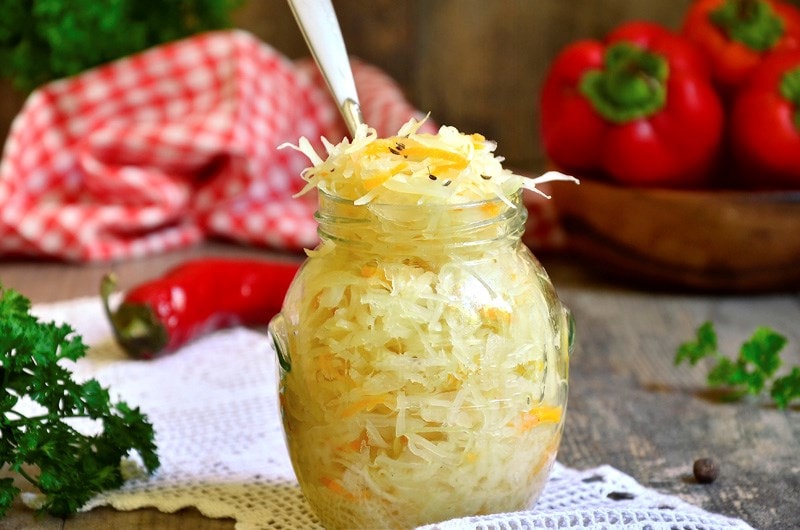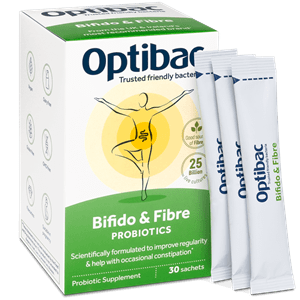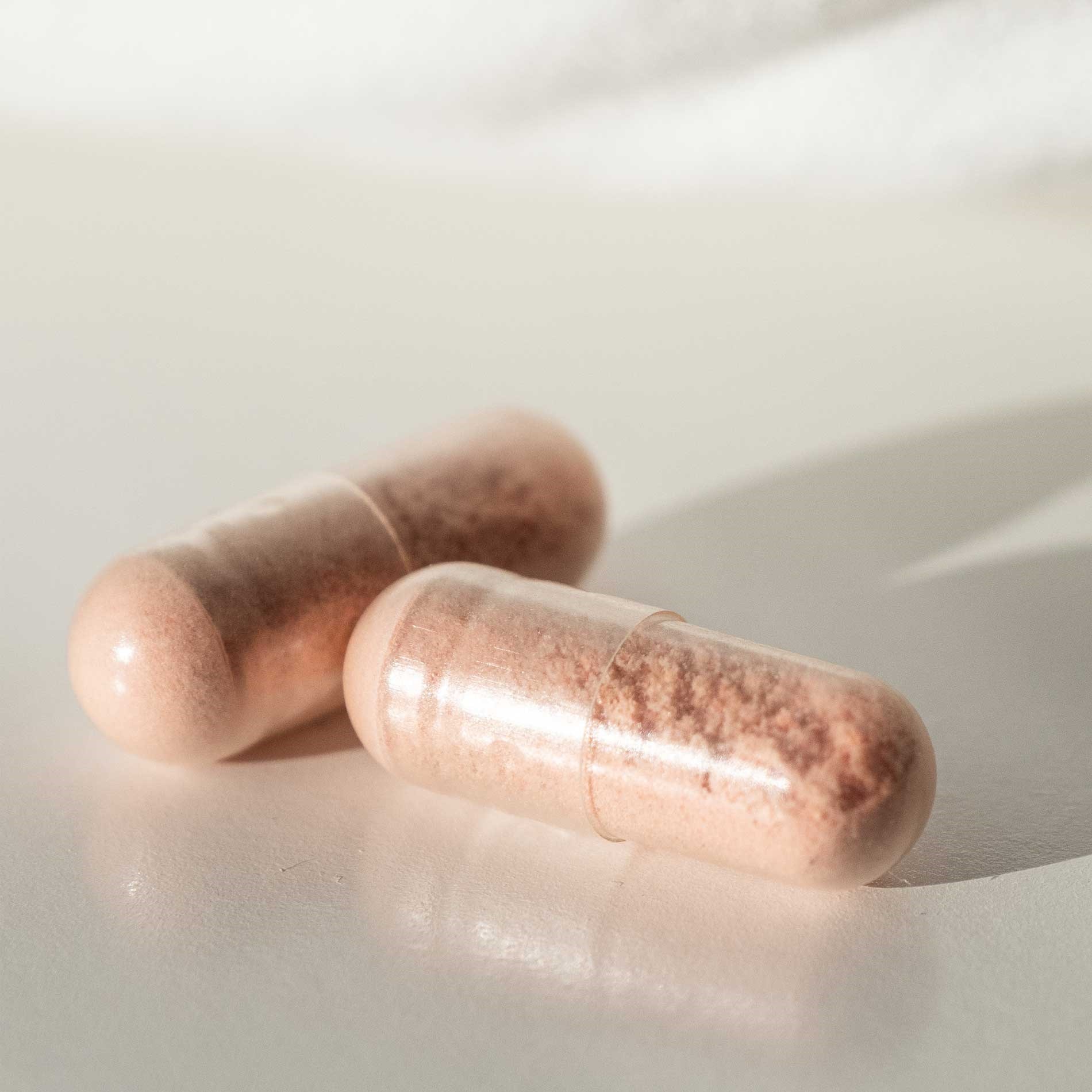Prebiotics vs Probiotics: What's the Difference?
You may have heard of both prebiotics and probiotics and you may already know that they are beneficial to our gut health. However, did you know that whilst they both support a healthy gut they are actually really rather very different? This article will detail all of the similarities and differences between these two fascinating substances. Please continue reading to find out more:
- Why are prebiotics and probiotics important?
- How do prebiotics and probiotics interact?
- Prebiotic vs probiotic: the differences between them.
- Prebiotic vs probiotic: which is best to take?
- Do I need both prebiotics and probiotics?
- Key takeaways
Why are prebiotics and probiotics important?
Both prebiotics and probiotics support healthy bacteria and beneficial organisms in your gut which help aid digestion but they exert their benefits in different ways. Probiotics are living organisms that are found in certain foods which add to the levels of healthy bacteria within our gut. Prebiotics on the other hand are not living but naturally occurring in a variety of plant-based foods. Prebiotics act as a food source for our live bacteria helping them to grow. Both are considered excellent in terms of maintaining optimal gut health1. For more information on how probiotics work, please take a look at the following page – Probiotics for Digestion.
How do prebiotics and probiotics interact?
Prebiotics feed the bacteria in our gut and stimulate the growth of our healthy bacteria.2 Certain plant-based foods in our diet interestingly can’t be digested by us, they, therefore, bypass digestion and travel straight to the colon where most of our beneficial bacteria live. Our bacteria metabolise and ferment these plant foods from our diet in order to help our good bacteria grow and thrive.
Prebiotic vs probiotic: the differences between them
Let’s start off by clearly defining what each substance does. Firstly, prebiotics are found in fibrous-rich foods that we can’t digest. The beneficial bacteria in our gut eat these plant foods and use it as an energy source to feed our resident gut bacteria. When prebiotics ferment these foods in the colon this is thought to improve metabolic health and provide necessary energy to our colon cells, reducing inflammation and promoting Immune health.3 If you are interested in learning more about prebiotics, please see our article What are prebiotics.
Examples of prebiotic foods include;
- Oats
- Green Bananas
- Artichokes
- Garlic
- Leeks
- Onions
- Apples
- Chicory
- Flaxseeds

Probiotics on the other hand are live bacteria found in certain foods or supplements, which provide us with numerous health benefits, helping to optimise the gut microbiome, from less beneficial and potentially pathogenic organisms to commensal and beneficial species. Probiotics may also help to modulate the immune system, decrease inflammation, and ward off infection. 4
Examples of probiotics include;
- Kefir
- Kombucha
- Miso
- Tempeh
- Yoghurt
- Sauerkraut
- Kimchi
- Live bacteria supplements

For more information on food sources of live bacteria and how they compare to probiotic supplements, please see our article Probiotic Supplements vs Yoghurts.
Prebiotic vs probiotic: which is best to take?
As discussed in this article, it’s certainly beneficial to include a little food source for the bacteria in the form of a prebiotic, as this will help the probiotics establish themselves in the intestine. However, some individuals can be very sensitive to the effects of prebiotics, which can cause some bloating symptoms in a minority of people. 5 This usually occurs in those with more significant digestive issues.
For this reason, it is not strictly necessary to take a prebiotic supplement, if you regularly consume fruits, vegetables and wholegrains. A healthy diet such as this will help to provide support for our gut bacteria. However, those with no significant gut issues who are looking to support their gut health may find a combination product of both prebiotics and probiotics very helpful, such as, the strain Bifidobacterium lactis BB-12® and the prebiotic FOS, which can both be found in Optibac Probiotics ‘Bifido & Fibre’.
Please read here for some interesting research looking into the health benefits of Prebiotics on human health: Prebiotics: A Look at FOS & Inulin.
Do I need both prebiotics and probiotics?
Since prebiotics are found in many daily foods, in most cases, it is not strictly necessary to need to take a prebiotic. However, for those who tolerate prebiotics and are looking to optimise their gut health prebiotics can be extremely helpful in the optimisation of our gut microbiome. 6
We recommend prebiotics and probiotics to all customers on a long-term daily basis to keep their digestive and immune systems in tip-top condition. The strain Lactobacillus acidophilus NCFM which is the most clinically researched strain of acidophilus is a particularly beneficial strain especially trialled for IBS and bloating. This strain can be found in Optibac Probiotics; ‘Every Day EXTRA’ and ‘Every Day MAX’. 7 For further reading, please see, NCFM® & Prebiotics for Gut Health
If you enjoyed this article, we think you’ll love to learn more here – What are Synbiotics?
Key takeaways
- Both prebiotics and probiotics support healthy gut bacteria but they exert their benefits in different ways.
- Prebiotics are by-products of plant-based food sources that feed the bacteria in our gut and stimulate the growth of our healthy bacteria.
- Probiotics are live bacteria found in certain foods or supplements, which help to optimise our digestive and immune health.
- Since prebiotics are found in many daily foods, in most cases, it is not strictly necessary to need to take a prebiotic. However, prebiotics can certainly help optimise our gut microbiome.
If you enjoyed reading about this subject, then please take a look at these related articles:
What are Prebiotics?
What are Probiotics?
Taking Probiotics daily
References
- Dorna Davani-Davari. (2019). Prebiotics: Definition, Types, Sources, Mechanisms, and Clinical Applications. National Library Of Medicine. [Online]. Available at: https://www.ncbi.nlm.nih.gov/pmc/articles/PMC6463098/
- Cleveland Clinic. (2020). Probiotics. [Online]. Cleveland Clinic. Last Updated: 03 September 2020. Available at: https://my.clevelandclinic.org/health/articles/14598-probiotics
- Jakub Żółkiewicz 1. (2020). Postbiotics-A Step Beyond Pre- and Probiotics. National Library of Medicine. [Online]. Available at: https://pubmed.ncbi.nlm.nih.gov/32717965/
- Yoshifumi Kotani. (2010). Oral intake of Lactobacillus pentosus strain b240 accelerates salivary immunoglobulin A secretion in the elderly: A rand. National Library of Medicine. [Online]. Available at: https://pubmed.ncbi.nlm.nih.gov/20796295/
- Optibac Probiotics. Probiotics and Side Effects - an in-depth review. [Online]. Probiotics Professionals. Available at: https://www.optibacprobiotics.com/uk/professionals/faqs/recommend-better/are-there-side-effects-to-probiotics
- Paulina Markowiak. (2017). Effects of Probiotics, Prebiotics, and Synbiotics on Human Health. National Library of Medicine. [Online]. Available at: https://www.ncbi.nlm.nih.gov/pmc/articles/PMC5622781/
- T Ringel-Kulka. (2014). Lactobacillus acidophilus NCFM affects colonic mucosal opioid receptor expression in patients with functional abdominal. National Library of Medicine. [Online]. Available at: https://pubmed.ncbi.nlm.nih.gov/24853043/
Popular Articles
-
Gut Health15 Nov 2023
-
General Health03 Nov 2023
-
Probiotics17 Dec 2024



